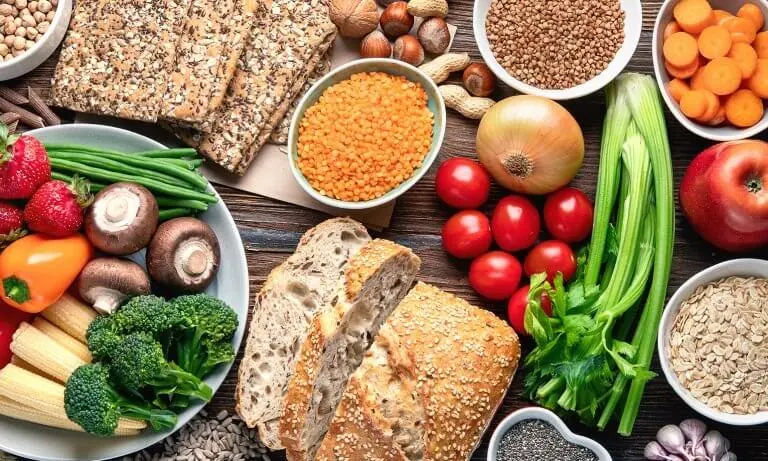Dietary fiber may be a sort of edible carbohydrates that’s not easily digestible by the human gastrointestinal system , although it provides several health benefits. Soluble and insoluble are two sorts of dietary fiber found commonly in plant-based foods.
As per the Dietary Guidelines For Americans (2015-2020) report, children are getting lower quantities than required thanks to reduced consumption of high-fiber food, like vegetables and whole-grains. A chronic deficit may increase the danger of several conditions, starting from constipation to obesity. Therefore, healthy intake is important for the general healthiness of youngsters and teenagers .
In this post, we share all the required information about importance of food and nutrition specially fiber-rich foods and therefore the recipes that you simply can prepare using those foods.
How Much Fiber Do Children Need?
The recommended quantity for youngsters varies as per their age, weight, and energy needs. The American Academy of Pediatrics (AAP) recommends a minimum of five servings of fruits and vegetables with other fiber-rich foods to satisfy a child’s daily fiber requirements of fiber.
The academy also recommends the “add five method” where you add five to the age of the kid to reach the amount of grams of fiber the kid needs per day. as an example , if the kid is ten years old, then they’re going to need 15 grams per day.
The Academy of Nutrition and Dietetics recommends specific units as per the child’s age bracket .
AGE (YEARS) FIBER (GRAMS PER DAY)
| Age | Fiber (gms) |
| 1 to 3 | 19 |
| 4 to 8 | 24 |
| 9 to 18 (girls) | 26 |
| 9 to 13 (boys) | 31 |
| 14 to 18 (boys) | 38 |
What Happens in excessive consumption?
Excess consumption of fiber through food is rare. As per the Academy of Nutrition and Dietetics, there’s no tolerable upper limit set for dietary fiber. Therefore, there’s no indicated intake level which will cause adverse effects.
A very high intake of could lead on to bloating, flatulence, and diarrhea. However, there’s little evidence that these effects can occur in otherwise healthy children and teenagers.
Experts recommend consuming adequate amounts from a well-balanced diet containing a good sort of natural plant foods. The utilization of dietary fiber supplements for youngsters needs pediatric guidance and will only be used if prescribed by the doctor.
Ways To Increase Fiber In Your Child’s Diet
Below are some tips loke add fiber to diet that you simply can attempt to increase your child’s daily intake.
• Include a minimum of one serving of whole-grain or cereal per meal. Whole wheat flakes, whole-grain bread, whole-grain pasta, oats, wild rice, and millets are options to pick .
• Read labels of packaged and processed foods and choose low sodium, low sugar, and high fiber content. All-bran breakfast cereals containing wheat bran and psyllium husk are easily available over-the-counter.
• Use oat bran or nutriment to thicken soups, porridge, and add crunchiness to yogurt and fruit recipes.
• Replace refined or all-purpose flour with whole-grain/millet flour for cooking and baking recipes.
• Include a minimum of one to 2 servings of a spread of beans and legumes during a day. Prefer making multi-bean recipes with many fresh, seasonal vegetables.
• Serve a minimum of five servings of whole fruits and vegetables during a day. you’ll also serve them as a part of salads, sandwiches, smoothies, and soups.
• Encourage your child to consume fruits and vegetables with peels to reinforce the quality of the diet. Add them to recipes made up of grains and cereals to accentuate their nutritional value.
• Add whole seeds and nuts in powder or chunks to main recipes like salads, porridges, smoothies, shakes, etc. in moderate amounts.
• Choose snacks, like air-popped popcorns, dry-roasted seeds and nuts, granola bars, nuts trail mix, whole wheat crackers, plain rye wafers, edible fruit , and vegetable chips.
For more concerns related to your child’s nutrition, visit our Dietetics Department or Book an Appointment with us!

